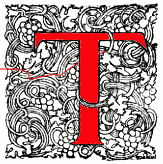
he lyrically intense Greek poetess Sappho, c.612-c.580 BC, leader of a school, or at least of a coterie, of young female followers on the Greek island of Mytilene (Lesbos), is known only from her surviving literary fragments. In her The Art of Loving Women and elsewhere she displays a consistent and elegantly restrained eroticism, tinged with not infrequent touches of her own “Bittersweet, sly, uncontrollable creature…”. Early in youthful adulthood she had begged her mother to release her from onerous household duties: “Mother, I can no longer weave. Slender Aphrodite has overcome me with longing for a girl…” Her creed was heartfelt, personal and truthful: “What cannot be said will be wept…May I write words more naked than flesh…”, and she called insistently upon the finer and more redeeming aspects of her culture and beliefs: “There is no place for grief in a house which serves the Muse…” Small wonder then that Sappho should continue to have been of note to the pre-Victorian and subsequent era of continuing English Romanticism.
Lord Byron, to many Victorians the doyen of Romantic poets, had enshrined her fame in the opening lines to his The Isles of Greece Don Juan, Canto III (1819-24): “The isles of Greece, the isles of Greece! Where burning Sappho loved and sung…” Irish poet Thomas Moore, 1779-1852, had also considered the young woman’s amours: “Lesbia hath a beaming eye, But no one knows for whom it beameth”, Lesbia Hath a Beaming Eye
Other aspects of her legendary fame, as with the suggestion of an unrequited love for Phaon the Boatman leading to Sappho’s early suicide, appear less certain, and would also require a revision of her famed lesbianism as possibly vying with a broader bisexuality. Such outcomes are discussed further below, in a final section on Oscar Wilde.
The Shorter English Dictionary (SOED) gives: Sapphic (Gk. Sapphikos) E16. Lesbic, Lesbian, Lesbianism (Gk. Lesbios from Lesbos). All L19. Recommended forms are Lesbian = inhabitant of Lesbos; lesbian = female homosexual. See also Meier (1993, p. 123).
Related Material including Paintings of Sappho
- “Sappho” by Christina Rossetti (text)
- Sappho and Christina Rossetti (essay)
- Sappho and Alcaeus by Sir Laurence Alma Tadema OM RA
- The Disciples of Sappho by Thomas Ralph Spence
- Sappho and Erinna in a Garden at Mytilene. by Simeon Solomon
Bibliography
Ellis, Henry Havelock.Studies in the Psychology of Sex. Philadelphia. F. A. Davis Co. 1901. Original publication in German, Leipzig 1897. Vol. 2 of an eventual six-volume set published in English before World War 1.
Ellis, H. H.Man and Woman. A Study of Human Secondary Sexual Characters. London: Walter Scott Ltd., 1894.
Krafft-Ebing, Richard von.Psychopathia Sexualis, with special reference to Contrary Sexual Instinct. A Medico-Legal Study.Philadelphia. F. A. Davis Co. 1893. Translated by C. G. Chaddock, from German 7th edition.
Meier, Christian.Athens. A Portrait of the City in Its Golden Age.New York. Henry Holt. 1998.
Last Modified 10 February 2021